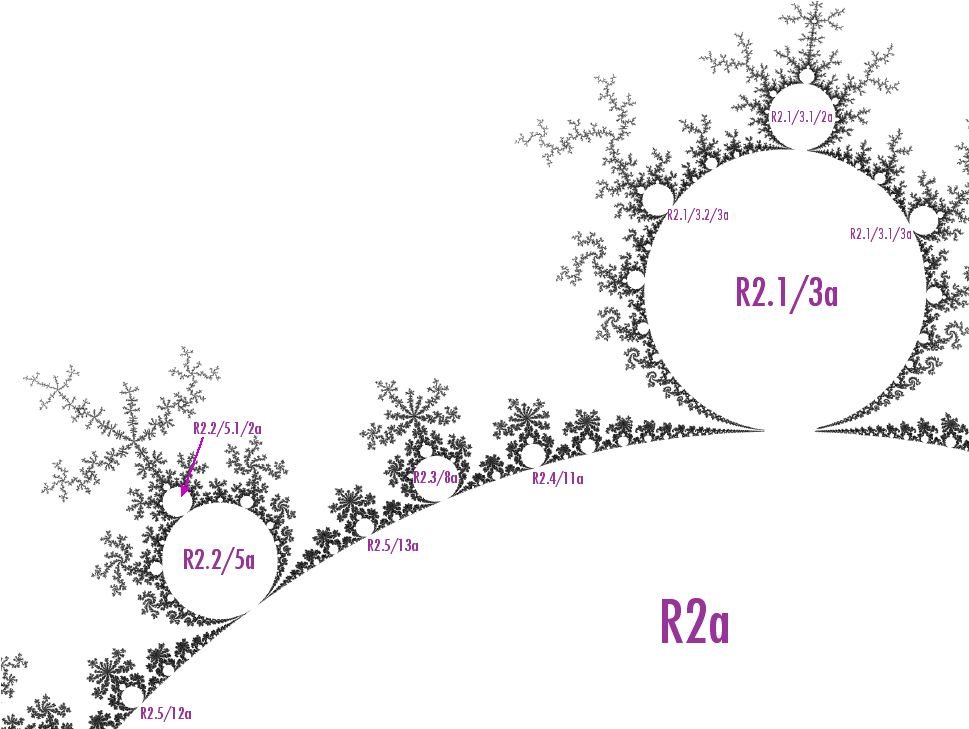Neighbors
Robert P. Munafo, 2012 Apr 18.
Two mu-atoms are neighbors if they are siblings and they have no other siblings between them that are larger.
For example: R2.1/3a has the following neighbors: In the clockwise direction: R2.1/4a, R2.2/7a, R2.3/10a, R2.4/13a, R2.5/16a, (and so on); and in the counter-clockwise direction: R2.1/2a, R2.2/5a, R2.3/8a, R2.4/11a, R2.5/14a, (and so on). Some of these can be seen in the figure below.
If two mu-atoms are neighbors, the their internal angles are said to be neighboring fractions. For example, in the figure below, R2.5/13a and R2.3/8a are neighbors; their internal angles are 5/13 and 3/8, which are neighboring fractions (also called Farey neighbors in Robert Devaney's, 1997 article "The Mandelbrot set and the Farey tree").
More examples:

various mu-atoms, some of which are neighbors
In this figure, R2.2/5a and R2.1/3a are neighbors because there is no larger mu-atom between them.
Similarly, R2.5/12a is a neighbor of R2.2/5a, and R2.3/8a is also a neighbor of R2.2/5a.
However, R2.5/12a is not a neighbor of R2.3/8a because the larger sibling R2.2/5a lies between them. Their internal angles 5/12 and 3/8 are not neighboring fractions.
See also larger neighbor, smaller neighbor, and Farey addition.
revisions: 20010123 oldest on record; 20120416 add illustration; 20120418 reference neighboring fractions
From the Mandelbrot Set Glossary and Encyclopedia, by Robert Munafo, (c) 1987-2024.
Mu-ency main page — index — recent changes — DEMZ
This page was written in the "embarrassingly readable" markup language RHTF, and was last updated on 2012 Apr 19.
 s.27
s.27